Distinguishing between investment banks, M&A advisors, and business brokers
Transaction advisors are an indispensable part of your team when you are contemplating any sort of M&A activity, whether as a buyer or a seller. Unless you are a seasoned M&A veteran, you’ll rely on your advisor to get you the best price, reduce risk, navigate the process, and get the deal closed.
But what kind of advisor is appropriate for your transaction can be perplexing if you are new to M&A transactions. To provide some clarity, this article addresses the topic from the perspective of the business owner contemplating an exit for the first time.
There are three main categories along the continuum of transaction advisors:
The distinctions between these groups are fundamental to your foray into M&A, but there are no bright lines between them. The transaction size ranges identified below are not hard-and-fast, and you will encounter considerable variability in these estimates depending on who you ask. The more important point is that each successive category handles transactions of a larger and increasingly more complex nature, brings more resources to bear, and offers a wider scope of services—at significantly higher cost. If ever there is a time when phrase, “the right tool for the right job” applies, this is it.
The following breakdown of the M&A landscape will serve as a useful guide as we consider the different advisor categories that serve the market. This categorization scheme is by no means hard-and-fast, and different practitioners will often use the same categories but with alternate definitions.
Economy Stratum: | Small Companies | Middle Market | Large Companies | ||
Middle Market Stratum: | Lower Middle Market (LMM) | Mid-Middle Market (MMM) | Upper Middle Market (UMM) | ||
Revenue and Enterprise Value (millions): | <= $5 | > $5; <= $150 | > $150; <= $500 | > $500; <= $1,000 | > $1,000 |
Count: | 5.6 mm + | 400k + | 4k + | ||
Share of GDP: | 15% | 40% | 45% | ||
Valuation multipes: | 2.0 – 3.0x | 4.0 – 11.0x | 12.0x + | ||
Breakdown of U.S. economy by company size

Business Brokers
Business brokers serve small to mid-sized sellers, typically with revenue between $500k and $20 million. Enterprise value for these sellers is typically less than $5 million, but it may be in the $500k to $10 million range. One to three employees is a typical size for these advisors. In terms of the table above, small companies are served almost exclusively by the business broker community, but business brokers also advise sellers toward the lower end of the LMM range.
Most business brokers are generalists. They act as facilitators, bringing buyers and sellers together. Their sell-side process typically involves:
- Helping the Seller set an asking price. The business broker uses the seller’s financial records, tax returns, and consultation with the seller to measure seller discretionary earnings (SDE). This will be used, along with an assessment of business operations, customer base, and other germane factors to estimate a range of prices buyers may be willing to pay for the company.
- Marketing the business for sale. Once a realistic asking price is set, the business broker prepares a teaser to introduce the company to potential buyers on a confidential basis, and a confidential information memorandum (CIM) to provide a more in-depth picture of the company to qualified buyers who express interest. The broker solicits interest through their network and lists the business on one or more digital services that connect buyers and sellers in the private market. Buyers can be corporate development arms or institutional investors, but they are often individual investor-operators.
- Screening potential buyers. The broker fields interest expressed by potential buyers, screening them for goodness of fit and financial wherewithal, and circulating the CIM after receiving a signed nondisclosure agreement (NDA).
- Negotiating with potential buyers. The broker collects questions from the buyers based on their review of the materials, arranges meetings with the seller, and negotiates offers on the seller’s behalf.
- Due diligence. Once a term sheet is signed, the broker often coordinates the buyer due diligence process with the seller.
- Closing coordination. The broker works with the qualified M&A attorney representing the seller to close the transaction.
Business brokers typically charge a success fee at closing based on the transaction price and usually ranging from 10% to 12%, depending on the riskiness of closing.

M&A Advisors
M&A advisors serve mid-sized and larger sellers, commonly defined in the chart above as the LMM, with enterprise value anywhere in the range of $2 million to $100 million and higher. M&A advisors typically have two to ten employees.
M&A Advisors bridge the gap between business brokers and IBs. They are sometimes referred to as boutique M&A advisors, or even boutique investment bankers, because they or their managing directors tend to have industry specializations. As the higher transaction sizes suggest, M&A advisors handle more complex transactions than business brokers, and they coordinate closely with the rest of the seller’s deal team, including the seller’s M&A attorney and CPA. Their sale process breaks down generally as follows:
- Establishing valuation expectations. M&A advisors have more research and analysis capabilities on their teams. Their valuation estimates incorporate industry specific factors, with the objective of dialing in the price expectations from the perspective of buyers that will be emphasized in the advisor’s marketing process. But unlike the business brokerage approach, the business is not listed with an asking price. Rather, price discovery for deals run by M&A advisors is usually a function of a more competitive marketing and overall deal process.
- Marketing the business for sale. M&A advisors’ marketing process differs from that of business brokers in several respects. Deal pricing does not start with a seller-defined asking price. Rather, the process is designed to create a competitive market for what would otherwise be an illiquid investment opportunity. Compared to the business broker’s more passive approach that relies heavily on digital listing services, M&A advisors conduct active outreach marketing, including phone and email to reach out to their network. Furthermore, in this process, the M&A advisor leverages the specialized industry-oriented knowledge and network for which it was hired. It is not uncommon for M&A advisors to maintain standing NDAs with their market network to enhance information sharing efficiency in the marketing process. The marketing effort places particular focus on strategic buyers, who will have a greater opportunity for exploiting synergies with the company and maximizing their ROI, and who can therefore justify a higher purchase price. As the M&A market has evolved, prime large-company and upper middle market (UMM) acquisition opportunities have been outstripped by demand for acquisitions as a path to growth, and private equity groups (PEGs), traditionally regarded as financial buyers, have developed operating strategies that put them in the realm of strategics alongside large corporate buyers. As a result, corporate buyers and PEGs alike have moved further down the continuum, into the mid middle market (MMM) and lower middle market (LMM), in search of growth opportunities. It is within this community of active acquirers that the M&A advisor targets buyers whose industry focus and investment theses align with the seller’s company. Like IBs, a critical aspect of the M&A advisor’s marketing approach is setting a target date or tight time frame for gathering indications of interest (IOIs) and letters of intent (LOIs). They coordinate in-person meetings with the seller and their operating team for each interested buyer, known as management meetings, in close proximity in order to achieve this. The objective of this approach is to generate competition among potential buyers, allowing the seller to achieve optimal price and terms.
- Negotiating with potential buyers. Because potential buyers have all met with management in the same narrow time frame and submit their IOIs around the same deadline, the process creates a competitive market in which to conduct negotiations. The M&A advisor will negotiate with buyers who submit IOIs after meeting with management, until a letter of intent (LOI) is agreed to with one of them. An LOI is a binding agreement that sets forth terms and expectations for the deal and serves as a precursor to the purchase agreement. Both M&A advisors and IBs serve as critical buffers in the negotiation process, not only reducing distraction for management, but also helping to prevent damage to the relationship between the buyer and members of management that will remain with the company after the sale.
- Due diligence. The M&A advisor assists the seller with buyer due diligence. The volume of inquiries and material involved in this process varies directly with the size and complexity of the deal.
- Closing coordination. The M&A advisor will coordinate closely with the seller’s counsel through closing.
- Post-closing support. The M&A advisor will assist the seller with matters requiring attention after closing as well.
When negotiating fees, Both M&A advisors and IBs will consider the risk of the deal and the level of M&A activity in the economy. Success fees for M&A advisor-led deals are commonly in the range of 4% to 6% for deals with $5 million to $10 million in enterprise value, 2% to 4% on deals between $20 million and $50 million, and 2% to 3% for deals between $50 million and $75 million. A common nuance is a minimum success fee, which tends to place a floor under the size of deals M&A advisors accept. Additionally, fees may be structured in tiers, which is typically done to apply an increased percentage to sale price in excess of a target agreed with the seller, which incentivizes the advisor to ensure the seller doesn’t leave value on the table during price negotiations. Another staple of M&A advisors’ fee structure is up-font retainer fees that can range anywhere from $5k to $50k, in addition to monthly retainers. Out-of-pocket expenses reimbursable by the seller are also defined in the service agreement.

Investment Banks
Investment banks’ clients are middle market and large companies, and tend to be publicly traded and have complex needs. They typically handle transactions over $100 million, with some firms only handling transactions much larger than that. $250 million deals are clearly in the IBs’ court. Global financial institutions like Goldman Sachs, JP Morgan Chase, and Morgan Stanley have IB divisions with thousands of employees. But a typical IB firm may have 10 – 50 employees. They thus have greater capacity to support a wider range of services.
IBs conduct a highly consultative process. working with clients in the strategic planning phase leading up to exit to help them consider their alternatives. Like M&A advisors, IBs conduct a much more proactive sell-side process, setting disciplined timelines for buyers, and pushing the seller and their deal team to adhere as well. The anatomy of the IB’s process is is similar to that of M&A advisors, but conducted on a larger scale. IBs handle large, complex business combinations and capital raising engagements, including IPOs and secondary offerings, as well as bond and bank note issuance. IBs are FINRA-registered broker-dealers, and their ability to raise capital if needed is a characteristic that distinguishes them.
The same cost components for working with M&A advisors apply to IB fee structures. The fee range for transactions over $100 million is typically in the 1% – 2% range, and declines with increasing enterprise value.
Does This Make it a No-Brainer?
If you are selling a small to mid-sized business, your solution will probably be to hire a business broker. The relative simplicity of the engagement makes it manageable from the broker’s perspective because they can usually undertake the process on a success fee basis while limiting the time and effort they invest. The Seller naturally finds this attractive because fees will only be paid out of deal proceeds at a successful closing. At this extreme of the continuum, it is often the most realistic fee arrangement.
For a small business seller, this may feel riskless, and it can be tempting to treat the selection of a business broker as a casual decision. The reality is quite the opposite. While the simplified fee arrangement eliminates your risk of incurring fees without seeing results, it puts the deal itself at greater risk because it lacks the balance of incentives that are built into the fee structures of M&A advisors and IBs. Retainers pay for the work needed to drive those deals forward, while holding back the majority of the compensation until a successful close. They get both the advisor and the seller invested in the deal from the start. They are designed to ensure better alignment of the interests of advisor and client, which is why they are an integral part of the fee structures of larger, high-stakes deals. So stripping them out of the equation means you need to think about the implications for your advisor’s incentives.
Focusing on advisors who customarily exclude retainers from their fee structures, like business brokers, is a practical expedient for deals at a smaller scale, but it changes the engagement dynamic. For one, you may need certain prep work to reduce risk in your deal that many brokers simply can’t provide. For instance, most brokers won’t have the expertise to remediate chronic under-investment in accounting and reporting that so commonly plagues small and mid-sized businesses. Even if they do, a success fee-only engagement structure puts the advisor at risk for all the extra time they put into the project to remediate those issues. And just as important, the seller bears no such risk. Experienced brokers know how dependent the success of a deal is on the seller coming up the learning curve, fully engaging in the process, and sometimes paying for services to remediate deficiencies that will throttle the deal.
If you are selling a small or mid-sized business, this puts the onus on you to make sure you are working with a business broker you are confident shares your interests and is being honest with you about the risks you face. It also requires you to be proactive in all phases of the process. Once you have your advisor in place, make sure your responsiveness to their requests and advice and your engagement in the process reflect how serious you are about closing your deal. If you are selling a middle market business that is large enough to justify some up-front fees for a more competitive sale process, be sure you are comfortable with the M&A advisor’s expertise and process. Are you confident they will help you detect deficiencies that will hamper the deal and will introduce the right service providers to get the company in shape? Do they have the skill and diligence needed to prepare marketing materials and prepare you to put your best foot forward? Does their network of private equity and strategic buyers focus on your industry, and if not, are you comfortable with their understanding of what is required for a successful deal process, and their access to the tools and databases needed to bring the right buyers to the table? Does the advisor intend to take responsibility for guiding you through and facilitating your efforts in the buyer’s due diligence process, or do they intend to pass the buck to your accountant or lawyer? Your deal team is critical to the success of your deal, and selecting an advisor that will manage the deal from inception to a successful closing is of paramount importance.
RELATED CONTENT



